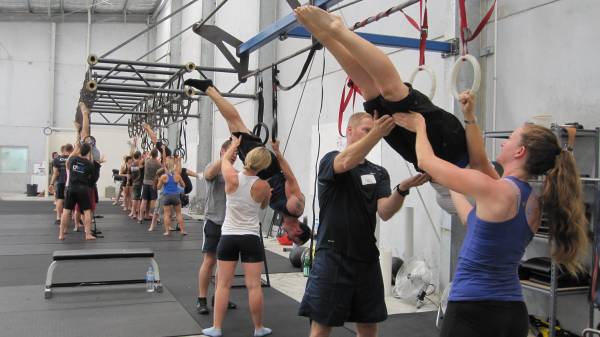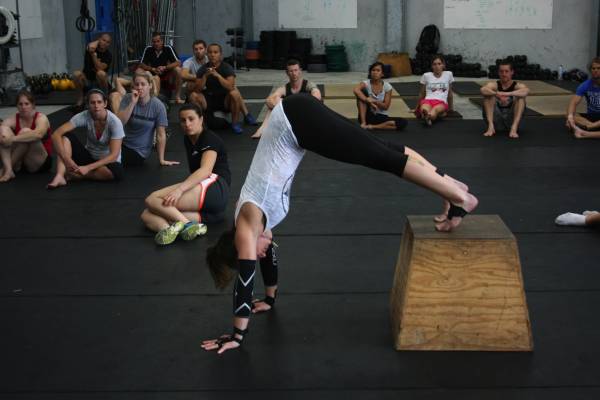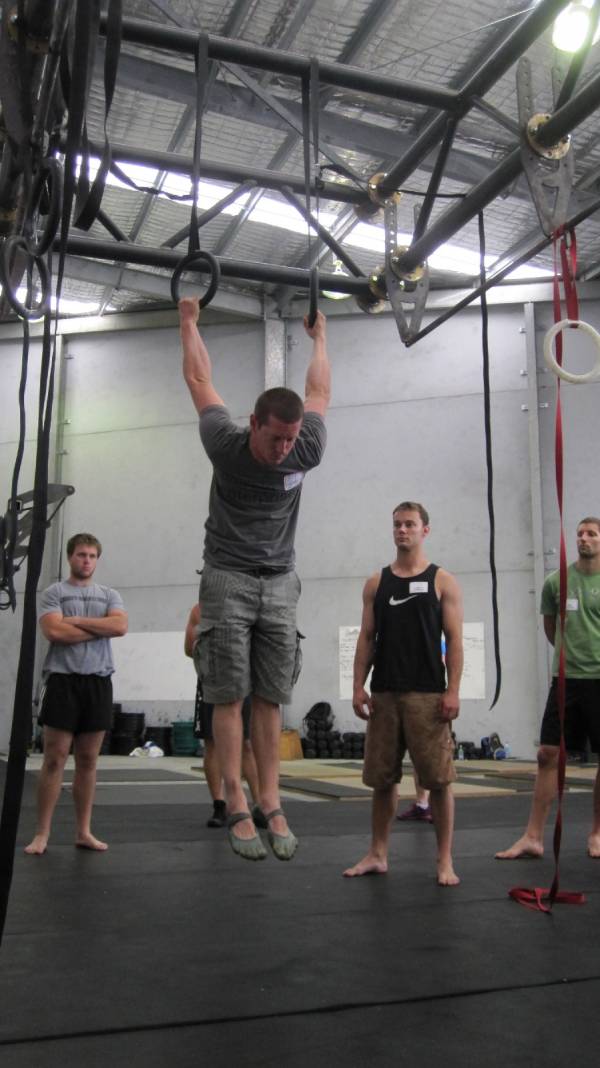The CrossFit community has been rapidly growing ever since it exploded upon the scene, but it’s always about getting back to basics. No matter if you are a diehard CrossFit athlete or just into working out at the gym it’s easy to fall prey to the fundamental error of progressing too quickly. We jump to more complicated lifts, heavier weight, and more intensity because of our ego. The truth is we compromise form, minimize gains, and set ourselves up for injury in an effort to seek maximal performance, along with trying to impress the opposite sex.
CrossFit lays the foundation at its Level 1 certification by stressing the importance of fundamentals. You hang out in a full depth squat position learning exactly what it feels like for what seems like hours. The instructors teach the basic movements by stressing virtuosity, along with learning the common faults and fixes. CrossFit’s movements are meant to be functional, natural, and inherently safe. But for a movement to be safe it must be performed correctly by a person with healthy tissue and proper movement patterns. Ultimately that comes back to the basics of knowing how to perform bodyweight squats, pushups, pullups, walking lunges, and core control. Once you have single and double leg/hip stability, core control, and shoulder stability you can begin to increase your training difficulty.
Rather than immediately progressing to jumping, sprinting, and lifting there is a smarter path. This begins with bodyweight control in gymnastics, done both for strength and also to build some endurance. Superior coordination and control can be learned here in safer parameters while still making huge gains. This is something I experienced in depth this past weekend at the CrossFit Gymnastics> certification seminar.
 Think about how the average gymnast looks and moves. You can advance your training by first learning an effective hollow position, along with the opposing arch. This core control and positioning translates into almost every other movement in CrossFit. It also has a high degree of transferability into any other sport and everyday life. Learning superior core control safeguards your low back, teaches great posture, and makes you stronger. From here we learn to continue core bracing while applying force from the hips or shoulders.
Think about how the average gymnast looks and moves. You can advance your training by first learning an effective hollow position, along with the opposing arch. This core control and positioning translates into almost every other movement in CrossFit. It also has a high degree of transferability into any other sport and everyday life. Learning superior core control safeguards your low back, teaches great posture, and makes you stronger. From here we learn to continue core bracing while applying force from the hips or shoulders.
Almost everything in CrossFit is dominated by the hips, specifically hip extension. If you are doing CrossFit correctly you should be able to snap your hips open effortlessly. On the other hand, CrossFit Gymnastics is a refreshing break from the hip dominated world and really teaches you to tap into your shoulders. If you are going to be doing anything with a pullup bar or rings you better know what your lats are and how to turn them on.
 Everything starts with a good progression – the hollow position, active shoulder, emphasis on the lats, and then begin your movement. There is an easy rule to remember for safe shoulder positioning: actively push or pull your shoulders to directly oppose the force being placed upon them. If you are hanging from a bar the force is pulling them up so you retract into your socket. If you are holding a barbell overhead you actively push into the bar driving the bar away from you.
Everything starts with a good progression – the hollow position, active shoulder, emphasis on the lats, and then begin your movement. There is an easy rule to remember for safe shoulder positioning: actively push or pull your shoulders to directly oppose the force being placed upon them. If you are hanging from a bar the force is pulling them up so you retract into your socket. If you are holding a barbell overhead you actively push into the bar driving the bar away from you.
In the CrossFit Gymnastics trainer’s curriculum there are the following movements: hollow position, arch position, rocking in these positions, beat swing, gymnastics kipping pullup, muscle up, front lever, back lever, handstand pushups, and the planche. Most people only begin to scratch the surface with the levers, gymnastics handstand pushup, and the planche, However, by going through the progressions you can effectively begin training for these skills. Even if you never attain these full skills, the strength and coordination will help in other movements. This was recognized back in the 1940s when the U.S. Navy adopted gymnastics to be a part of their regular training routine. It forged stronger bodies, allowed for better spatial awareness, and made the sailors more fearless. How many of you would like that yourselves or for your clients?
In addition to the actual movement there were some other gems to come out of the CrossFit Gymnastics course:
 Do less and do it better. Instead of cramming more volume into your training make sure the training you have is effective and performed to the best of your ability
Do less and do it better. Instead of cramming more volume into your training make sure the training you have is effective and performed to the best of your ability- Don’t CrossFit the s@# out of it. Warm-ups and skills cannot be won, yet think how many overly competitive people rush through them. Also when going through progressions don’t try to go beyond where you currently are or where your instructor is taking you.
- You can never be too good at the basics. If your air squat isn’t perfect, then why are you trying to overhead squat anything at all?
- Failure conditions more failure. Your body continuously learns the patterns you are going through, therefore you should not fail on lifts or gymnastics movements unless testing for a PR. You should only test for PRs every six to eight weeks, and most of the time a 95-98% effort is better suited.
Going back to bodyweight and perfecting movement can translate to being a better all-around athlete and being more effective in the rest of your life. Perfecting that overhead squat at 225 is badass, but isn’t going to really help you in many practical situations. Take things back a notch, slow down your movements, practice some static holds, and master yourself before you start throwing around huge external loads. Your body will thank you and when you get ready to move that heavy weight it’ll be easier than before.
Photos courtesy of Jeff Tucker and CrossFit Gymnastics>.






